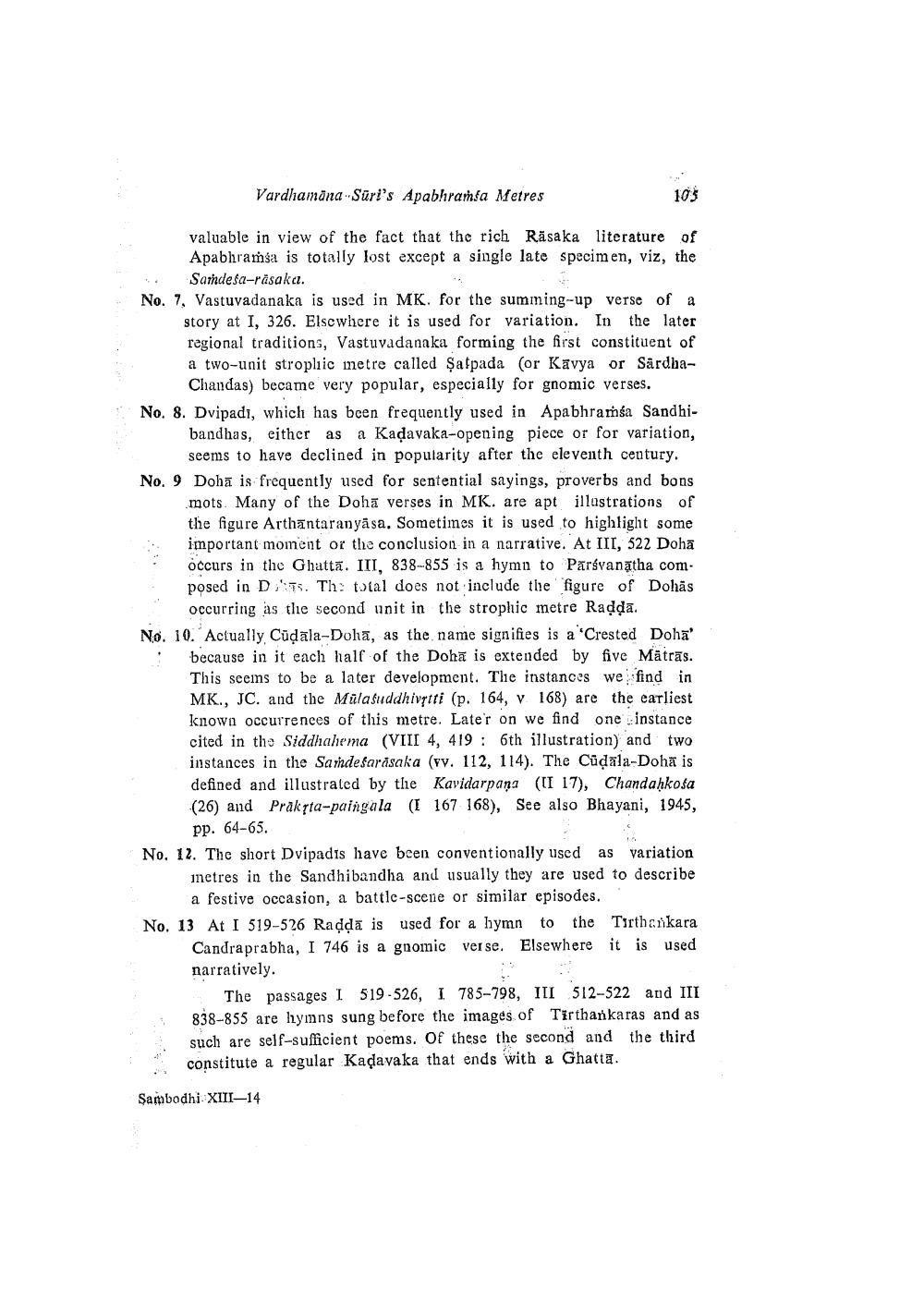________________
Vardhamāna Süri's Apabhrama Metres
105
valuable in view of the fact that the rich Rāsaka literature of Apabhramsa is totally lost except a single late specimen, viz, the
Samdesa-rasaka. No. 7, Vastuvadanaka is used in MK, for the summing-up verse of a
story at 1, 326. Elscwhere it is used for variation. In the later regional traditions, Vastuvadanaka forming the first constituent of a two-unit stropliic metre called Şafpada (or Kavya or Särdha
Chandas) became very popular, especially for gnomic verses. No. 8. Dvipadi, which has been frequently used in Apabhramsa Sandhi
bandhas, either as a Kadavaka-opening piece or for variation,
seems to have declined in popularity after the eleventh century. No. 9 Dohā is frequently used for sentential sayings, proverbs and bons
mots. Many of the Dohā verses in MK. are apt illustrations of the figure Arthantaranyāsa. Sometimes it is used to highlight some important moment or the conclusion in a narrative. At III, 522 Doha occurs in the Ghatta. III. 838-855 is a hymn to Parsvanatha com. posed in D 75. Th: total does not include the figure of Dohās
occurring as the second unit in the strophic metre Radda. No. 10. Actually, Cüļala-Doha, as the name signifies is a 'Crested Dohā'
because in it each half of the Dohā is extended by five Mätras. This seems to be a later development. The instances we find in MK., JC. and the Mülasuddhivptti (p. 164, v. 168) are the earliest known occurrences of this metre. Later on we find one instance cited in the Siddhahema (VIII 4, 419 : 6th illustration) and two instances in the Sandefardsaka (vv. 112, 114). The Cüdala-Doha is defined and illustrated by the Kavidarpaņa (II 17), Chandahkota (26) and Prakrta-paingala (1 167 168), See also Bhayani, 1945,
pp. 64-65. No. 12. The short Dvipadıs have been conventionally used as variation
inetres in the Sandhibandha and usually they are used to describe
a festive occasion, a battle-scene or similar episodes. No. 13 At I 519-526 Radda is used for a hymn to the Tirthankara
Candraprabha, I 746 is a gnomic verse. Elsewhere it is used narratively.
The passages I 519-526, I 785-798, III 512-522 and III 838-855 are hymns sung before the images of Tirthankaras and as such are self-sufficient poems. Of these the second and the third constitute a regular Kadavaka that ends with a Ghatta.
Sambodhi XIII–14




